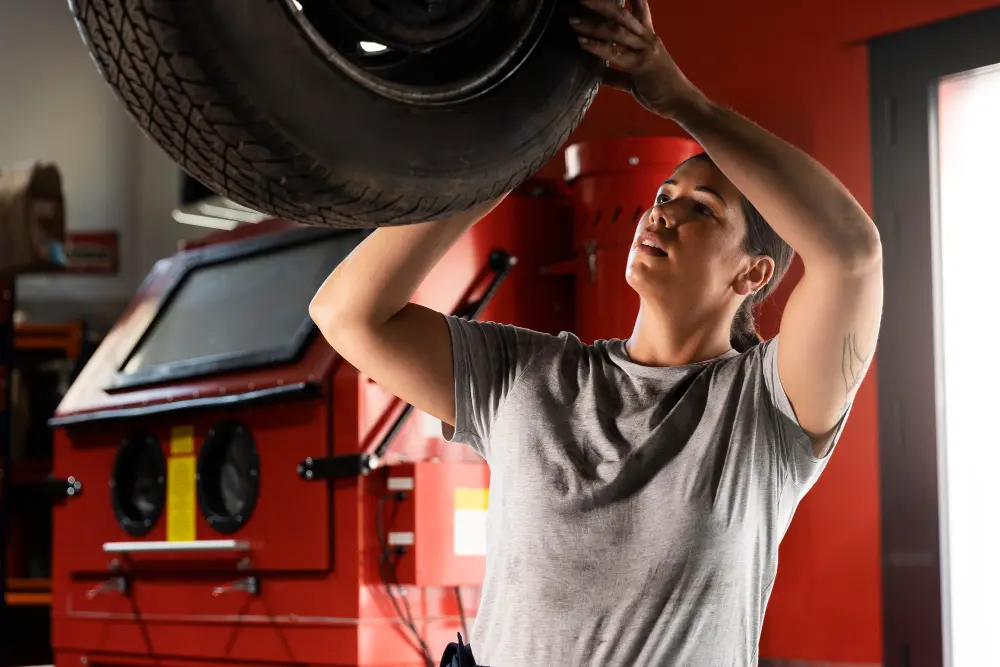
Everything You Need to Know About Rubber Auto Parts and Their Longevity
Automobile rubber parts are important for a perfect vehicle ride.
From sealing important areas to reducing vibrations, these parts help your car perform well and stay in good condition.
Let’s look into what these parts are, how long they last, and how you can take care of them
“Upgrade your vehicle with premium spare parts.”
Contact our experts today.
+971507862174
Common Rubber Auto Parts
Many parts in your car are made of rubber.
Some of the most common ones include:
- Rubber Hoses: These carry fuel, coolant, and air throughout the car.
- Rubber Seals and Gaskets: These prevent leaks in the engine and other systems.
- Suspension Bushings: They absorb bumps and vibrations, giving you a smoother ride.
- Weatherstrips: These seal doors, windows, and the trunk to keep out water and dust.
- Engine Mounts: They reduce vibrations between the engine and the car’s frame.
Each of these rubber parts has a specific job.
When they all are in good condition, they help keep your car ride well.
What Affects the Lifespan of Rubber Parts?
Rubber parts can last a long time.
But their lifespan depends on several factors:
- Material Quality: High-quality rubber, like synthetic types (e.g., silicone or EPDM), lasts longer than natural rubber.
Natural rubber can wear out more quickly. - Exposure to Heat and Sunlight: Rubber can break down if exposed to too much heat, UV rays, or chemicals like oil and coolant.
- Driving Conditions: Rough roads, heavy loads, or fast driving put more pressure on parts like suspension bushings and engine mounts.
- Maintenance: Regular checks and maintenance can help catch problems early and extend the life of your rubber parts.
Signs You Need to Replace Rubber Auto Parts
Look out for these signs that your rubber parts might need replacing:
- Cracks or Damage: If you see cracks on hoses, seals, or mounts, it’s time to replace them.
- Excessive Vibration: If your car vibrates more than usual, suspension bushings or engine mounts might be worn out.
- Leaks: Damaged gaskets or seals can cause fluid leaks.
- Strange Noises: Squeaks or knocking sounds could mean bushings or weatherstrips are worn.
How to Make Rubber Auto Parts Last Longer
You can extend rubber auto Spare parts longevity by following these tips:
- Regular Inspections: Have a mechanic check the condition of your rubber parts during routine services.
- Clean Parts Regularly: Dirt and debris can cause damage, so keep rubber parts clean.
- Use UV Protectants: Protect seals and weatherstrips from sunlight to prevent cracking.
- Avoid Harsh Chemicals: Keep rubber parts away from oil spills or brake fluid.
How Long Do Rubber Parts Last?
The lifespan of rubber parts depends on the part and driving conditions:
- Rubber Hoses: These can last 5 to 10 years, but high temperatures may shorten their life.
- Suspension Bushings: Typically last between 80,000 to 100,000 kilometres, though rough roads may cause them to wear out sooner.
- Engine Mounts: These often last around 5 to 7 years, or 100,000 kilometres.
An Overview of rubber aging and its prevention
Rubber aging is the process where rubber materials break down over time.
This happens because of exposure to things like heat, light, oxygen, ozone, and chemicals. This breakdown causes the rubber to weaken and lose its original properties, such as flexibility and strength.
When rubber ages, the tiny molecules in it start to change.
This leads to cracks, stiffness, and less resistance to wear and tear.
Over time, aged rubber becomes less elastic.
It also becomes less strong and more likely to tear or break.
Ways to Prevent Rubber Aging
1. Proper Storage & Handling:
- Store rubber products in cool, dry places.
- Keep them away from sunlight and heat.
- Use protective packaging like sealed bags.
- This helps keep rubber safe from moisture, dust, and contaminants.
- Handle rubber gently to avoid bending, stretching, or squeezing.
- These actions can speed up the aging process.
2. Use Protective Coatings:
- Apply UV-resistant coatings to rubber exposed to sunlight or the outdoors.
- Use ozone-resistant coatings for better protection.
- Treat rubber with special chemicals like anti-oxidants.
- These chemicals protect rubber from damage caused by light and air.
3. Control the Environment:
- Keep temperatures under control in places where rubber is stored or used.
- Control humidity levels as well.
- Use air filters to reduce ozone levels.
- Ozone can cause rubber to age faster.
4. Choose the Right Materials:
- Select rubber compounds made for specific uses.
- Ensure they are designed for their environment.
- Use additives that improve the rubber’s durability.
- These additives help increase resistance to UV rays and chemicals.
5. Regular Inspection & Maintenance:
- Check rubber parts regularly for signs of wear or aging.
- Replace old or damaged rubber parts as soon as possible.
- This helps avoid safety risks or equipment problems.
6. Environmental Protection:
- Minimize rubber’s exposure to harmful chemicals.
- Reduce exposure to pollutants as well.
- Follow industry guidelines for handling rubber products.
- Dispose of rubber properly to prevent contamination.
Conclusion
Rubber auto parts play an important role in your car’s performance and safety. But they don’t last forever.
By taking care of them and replacing them when needed, you can avoid bigger problems down the road. Regular checks, proper maintenance, and being aware of any signs of wear can help keep your car in great shape for longer. Taking care of your rubber auto parts is simple, but it makes a big difference in keeping your car safe!
